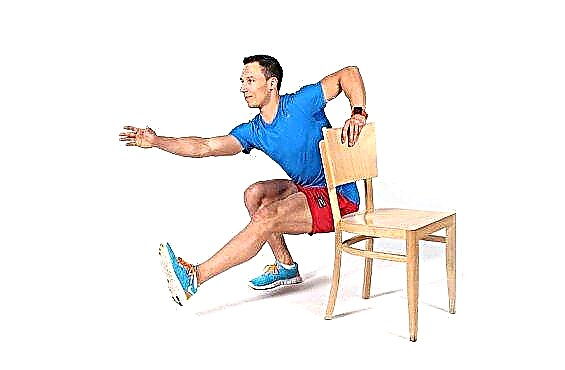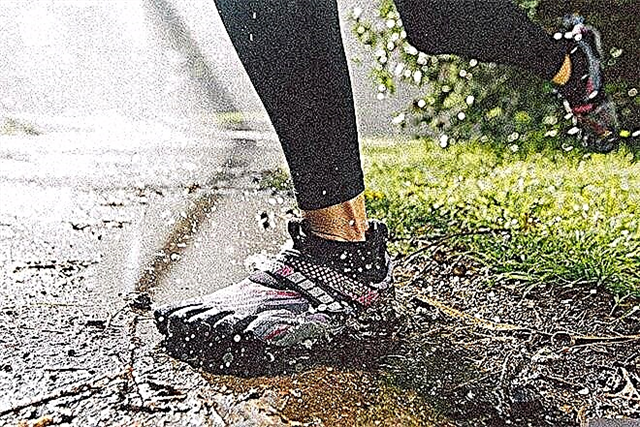Bench push-ups are an isolated exercise aimed at developing the medial and lateral triceps heads, performed with the athlete's own weight. Working with your weight in push-ups and pull-ups allows the athlete to better feel the stretch and contraction of the working muscle group.
The technique of reverse push-ups from the bench helps to increase the strength and volume of the triceps brachii. When combined with basic exercises (such as the close-grip bench press or the French press), this allows the athlete to make significant progress in gaining muscle mass and increasing arm volume. By doing reverse push-ups from the bench, you also make your training process more varied, thereby creating even more muscle growth factors.
In this article, we will tell you which muscles work when doing push-ups from the bench, how to do the exercise correctly to avoid mistakes and injury, and also tell you which push-up program from the bench will help you achieve good results in triceps training as soon as possible.
The benefits of doing the exercise
Triceps bench push-ups can be performed by both beginners and experienced crossfit, bodybuilding or athletics athletes, as everyone can benefit from this exercise for themselves.
Beginners
For example, beginners should start training triceps with this exercise, and only then move on to heavy dumbbell or barbell presses - this way you will strengthen the articular-ligamentous apparatus, establish neuromuscular connection and tone the arm muscles. After you learn how to properly do push-ups from the bench in the support from behind due to the isolated work of the triceps, you can move on to push-ups on the uneven bars, bench press and other exercises. Then you will better understand the biomechanics of these movements and prepare the muscles for harder work, minimizing the risk of injury to the elbow or wrist joints. In addition to the triceps, you will also strengthen the anterior deltoid bundles, lower chest and abdominal muscles.

© Makatserchyk - stock.adobe.com
For the pros
More experienced athletes often put reverse grip push-ups from the bench at the very end of the triceps workout in order to pump it with blood as much as possible due to isolated study and achieve good muscle separation - each triceps bundle will be drawn and look advantageous in conjunction with developed biceps and delts.
For girls
Reverse push-ups from the bench are very useful for girls and women who have problems with the skin on their hands (cellulite, stretch marks, etc.). Many women ignore arm training altogether, citing the fact that they do not want to have huge hypertrophied muscles, like bodybuilders. Of course, this is a common misconception. Push-ups from the bench for girls are not dangerous in terms of deteriorating the shape of the hands - they will not increase the volume of the hands to monstrous sizes, but they will quickly bring your problem areas into good tone.
Bench push-up technique
The triceps bench push-up technique provides several options for performing this exercise. In this case, the hands in all cases work in the same way, the only difference is in the position of the legs. It is customary to highlight the classic technique (push-ups when the legs are on the bench), which is facilitated for beginners and overweight people, as well as push-ups from the bench in the back with weights on the hips for experienced athletes.
Classic reverse push-up technique

The classic bench push-up technique involves using two benches of the same height. It is necessary to place them at a comfortable distance opposite each other, this factor depends on the height and length of the athlete's legs. On one bench we put our hands with palms down at a level slightly wider than the shoulders, on the other we put the heels, they can be placed close to each other or leave a small distance between them - as you prefer. Thus, the athlete is essentially doing push-ups between the benches. The exercise can be done at home, then use low furniture, such as a sofa and a chair, instead of benches.
- After you have correctly positioned your arms and legs, straighten your legs and back, you must observe natural lordosis throughout the lower back. The gaze should be directed straight ahead. The buttocks should be closer to the bench on which the hands are standing, but not touching it.
- Begin to smoothly lower your pelvis down, inhaling, while simultaneously bending your arms and keeping them pressed to the body. Do not spread your arms to the sides - this way most of the load will go away from the triceps, and you risk getting an injury to the elbow joint.
- Sink down to a comfortable corner. The movement should be quite amplitude, but do not reach the point of absurdity in this moment. Do not try to go down as low as possible and reach the floor with your buttocks, your joints will not thank you for this. If you feel discomfort in the shoulder or elbow joints when lowering down too low, perform the exercise in a shorter amplitude.
- While exhaling, return to the starting position, then repeat the movement. It is advisable not to linger at the top point with fully extended arms, since there is too much pain on the elbows. It is best to work without stopping - this way you protect your joints and make the load on the triceps more intense. This will be evidenced by good pumping and a strong burning sensation in the triceps.
Lightweight technique for beginners

Overweight athletes or simply beginners may find this push-up option too difficult. This is due to the fact that their weak triceps will not be able to squeeze up a lot of weight. For this reason, we recommend starting the study of the exercise with a lightweight version: we put our feet not on the bench, but on the floor, so the center of gravity changes, and it becomes much easier to push up. Legs can be kept straight or slightly bent at the knees (about 30 degrees). Taking into account your anatomical features, choose the option that seems most comfortable to you, and the triceps will contract at full strength. You can also watch how to properly do lightweight reverse push-ups from the bench in the video.
Doing an exercise with a weight
To complicate the task and make the load on the triceps larger and more intense, you can use additional weights in this exercise. Ask your training partner to place the barbell disc on your front thigh. Pick up the weight at your discretion, but we do not recommend starting right away with serious weights. Perhaps your muscles will already be ready for it, but your ligaments are definitely not.
Performing push-ups with a disc, it is more difficult for you to maintain balance, and a large number of stabilizing muscles are included in the work, but at the same time, the risk of injury increases.

Typical mistakes of athletes
The back-to-bench triceps push-up is a technically simple isolated exercise, and it doesn't have as many pitfalls as the close-grip bench press. However, the technical inaccuracies described below will prevent you from getting the most out of this exercise, and if you recognize yourself in one of these points, the technique must be corrected immediately. In order to learn how to properly do push-ups from the bench from behind, watch a couple of training videos on the Internet or contact a personal trainer in your gym.
There is discomfort - don't
Do not perform the exercise if you feel discomfort in your shoulders or elbows while doing it. Protect your body (cartilage restoration is a long, expensive and unpleasant process). Instead, swap this exercise for any other isolated exercise that works for the triceps, such as the overhead block extension.
Arms too wide
Do not place your arms too wide on the bench, the optimal width is slightly wider than shoulder level. Spreading your arms too far to the sides will make it harder to control their position. You can unknowingly bring them inward, risking injury to your elbow joints and ligaments.
Don't linger in the upper phase
Do not stay too long at the top point with your arms fully extended - there is too much stress on the elbows. It is best to work non-stop, without extending your arms to the end at the top. This will provide the triceps with the most blood supply.
Joint and ligament injuries
Be especially careful when performing the exercise if you have previously had joint and ligament injuries. Warm up thoroughly, use elastic bandages and perform the movement as smoothly and under control as possible.
More accurate with weights
Do not overdo it with additional weights. If your triceps are already well developed, then the main strength load should be obtained from basic exercises performed with free weights. In this case, leave the push-ups from the bench at the end of the workout. Such a scheme will help to comprehensively develop the triceps muscle of the shoulder and achieve good relief.
Do not combine with the uneven bars
Do not do bench push-ups and bar push-ups in the same workout. These exercises have almost the same biomechanics, and you risk simply overtraining your muscles.
The support must be firm
Do not exercise on an unstable or soft surface. So you will be too distracted by the position of the arms and legs, and you will hardly be able to concentrate on working out the triceps.
Don't experiment
Do not do unnecessary experiments in your triceps training - all the truly "working" things have already been invented before us. Several times I had to observe the following picture. During push-ups, the athlete rested on the bench not with his palms, but with his fists, while his elbows “walked” from side to side. It does not make sense to do this, and the brushes can be well strengthened with the help of other exercises, without resorting to such an initiative.
Bench push-up program
To increase the number of repetitions in this exercise, you should correctly distribute the load during the training split. It will not be difficult for any more or less experienced athlete to learn how to perform 50 or more triceps push-ups from the bench in a fairly short time.
We offer the following scheme of push-ups from the bench:
- Do bench push-ups twice a week, after chest workout and after back workout.
- After your chest workout, do 4-5 sets in the middle rep range (start with 12-15 reps and gradually increase the load). Rest between sets - 1-1.5 minutes.
- Next, do 2 sets after training your back with a wide rep range (try to work to failure on each set). Rest between sets should be until breathing is fully restored.
This bench push-up program is designed for 7 weeks, and with it you can get up to 100 reps in one set. Working in such a large repetition range produces good blood circulation, puts tremendous stress on all types of muscle fibers, and promotes muscle mass and triceps strength.
| Week number | Performed after training: | The number of approaches and reps: |
| 1 | Breasts | 5x12 |
| Backs | 2x20 | |
| 2 | Breasts | 5x15 |
| Backs | 2x25 | |
| 3 | Breasts | 4x20 |
| Backs | 2x35 | |
| 4 | Breasts | 4x30 |
| Backs | 2x55 | |
| 5 | Breasts | 5x40 |
| Backs | 2x70 | |
| 6 | Breasts | 4x55 |
| Backs | 2x85 | |
| 7 | Breasts | 4x70 |
| Backs | 2x100 |
In this case, reverse push-ups from the bench should be the only exercise with which you train the triceps. If you add 2-3 more exercises to it, you will simply overtrain your muscles and will not be able to progress further in gaining strength and mass.
After completing this program, you should take a short pause in your triceps training and allow the ligaments and tendons to fully recover, so that then with renewed vigor you can start intense, hard training.









